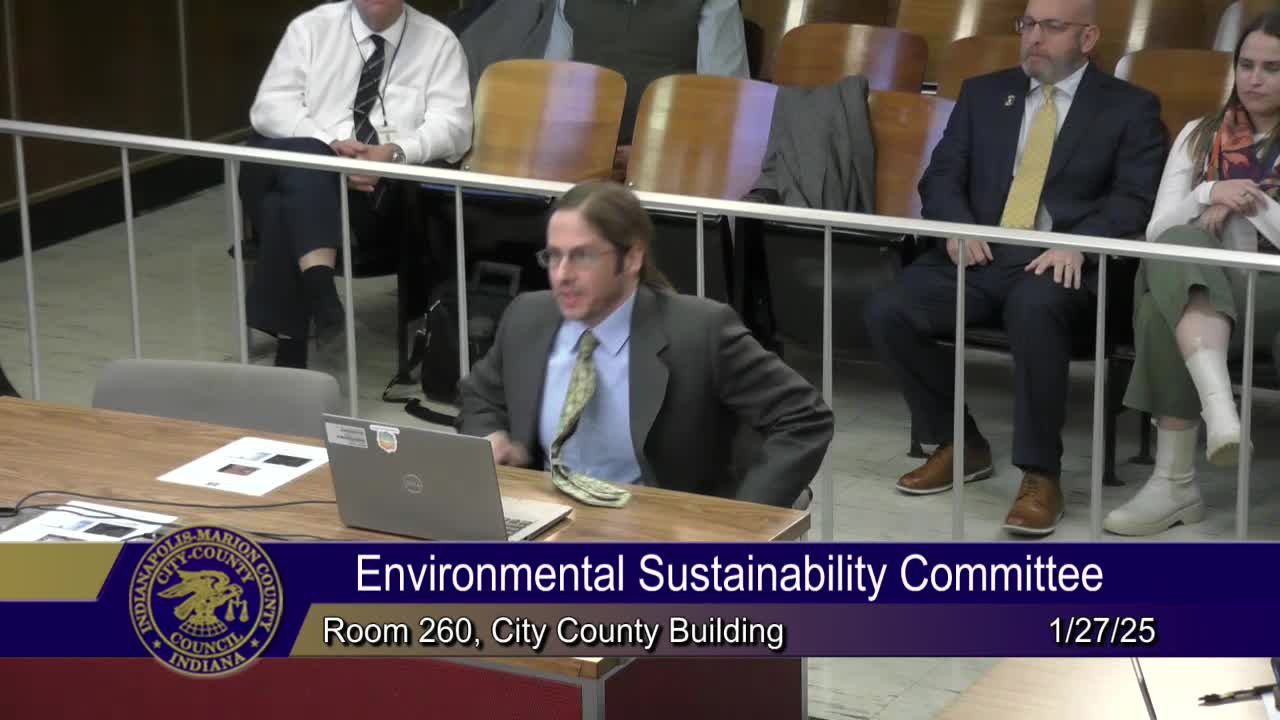IDEM describes Environmental Stakeholder Inclusion program and public-facing data tools
January 27, 2025 | Indianapolis City, Marion County, Indiana
This article was created by AI summarizing key points discussed. AI makes mistakes, so for full details and context, please refer to the video of the full meeting. Please report any errors so we can fix them. Report an error »

Herb Engman, program lead for the Environmental Stakeholder Inclusion (ESI) program at the Indiana Department of Environmental Management (IDEM), described how IDEM handles public inquiries, accessibility and targeted outreach and demonstrated a public GIS tool that links to agency documents.
Engman said the ESI program implements the agency’s nondiscrimination policy and emphasizes “fair treatment and meaningful involvement,” language taken from EPA environmental justice guidance. The program provides an intake process for questions and concerns, offers translation and interpretation (noting frequent Spanish-language requests), coordinates ADA accommodations for public hearings and translates technical responses from subject-matter experts into plain English for stakeholders.
The Nut Graf: ESI provides a tracked request system with an acknowledgement and an initial response or update within 30 days, and a formal target of resolving requests within 90 days. Engman said, however, that in practice ESI requests typically take “two or three weeks” or less to resolve and that the 90-day metric exists to cover complex cases.
Engman also demonstrated IDEM’s “What’s in My Neighborhood?” GIS tool, which allows users to view state cleanups, monitoring stations and other environmental layers and to open linked documents from IDEM’s virtual file cabinet. He used a local site near Shapiro’s Deli as an example of how historical documents and no-further-action letters are available through the tool.
Committee members pressed for ways to make bilingual outreach more visible to Spanish-speaking residents. Engman said IDEM has expanded Spanish-language school presentations and gone to community festivals and local events, but noted some communities remain reluctant to contact government offices and that IDEM continues to explore methods to increase trust.
Ending: Engman invited councilors and residents to use the “What’s in My Neighborhood?” tool and to contact ESI staff for assistance. He said IDEM maintains an internal case-management system for ESI requests and staff resources across the state to answer stakeholder inquiries.
Engman said the ESI program implements the agency’s nondiscrimination policy and emphasizes “fair treatment and meaningful involvement,” language taken from EPA environmental justice guidance. The program provides an intake process for questions and concerns, offers translation and interpretation (noting frequent Spanish-language requests), coordinates ADA accommodations for public hearings and translates technical responses from subject-matter experts into plain English for stakeholders.
The Nut Graf: ESI provides a tracked request system with an acknowledgement and an initial response or update within 30 days, and a formal target of resolving requests within 90 days. Engman said, however, that in practice ESI requests typically take “two or three weeks” or less to resolve and that the 90-day metric exists to cover complex cases.
Engman also demonstrated IDEM’s “What’s in My Neighborhood?” GIS tool, which allows users to view state cleanups, monitoring stations and other environmental layers and to open linked documents from IDEM’s virtual file cabinet. He used a local site near Shapiro’s Deli as an example of how historical documents and no-further-action letters are available through the tool.
Committee members pressed for ways to make bilingual outreach more visible to Spanish-speaking residents. Engman said IDEM has expanded Spanish-language school presentations and gone to community festivals and local events, but noted some communities remain reluctant to contact government offices and that IDEM continues to explore methods to increase trust.
Ending: Engman invited councilors and residents to use the “What’s in My Neighborhood?” tool and to contact ESI staff for assistance. He said IDEM maintains an internal case-management system for ESI requests and staff resources across the state to answer stakeholder inquiries.
View full meeting
This article is based on a recent meeting—watch the full video and explore the complete transcript for deeper insights into the discussion.
View full meeting
